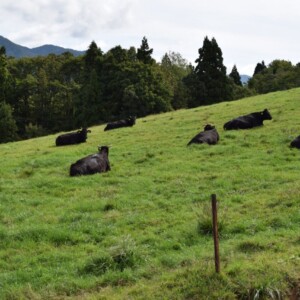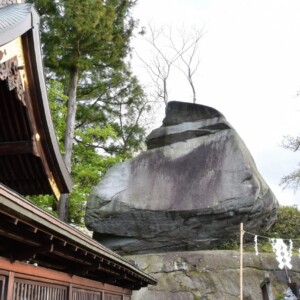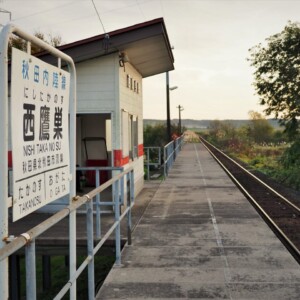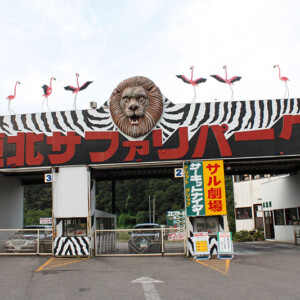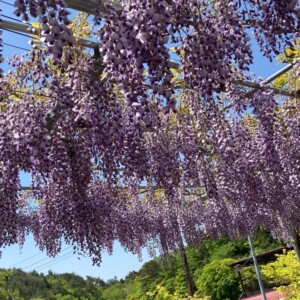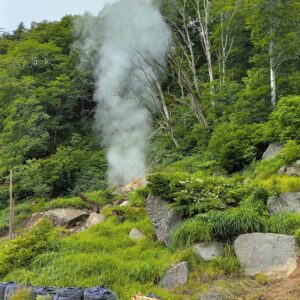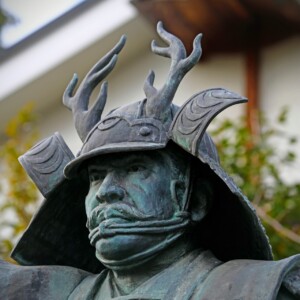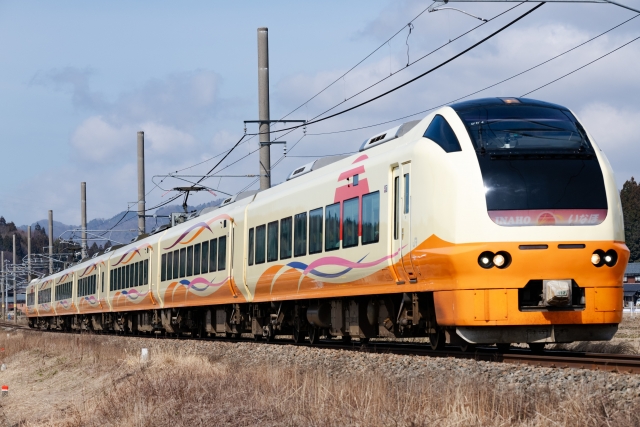
The Inaho express train has been connecting the Sea of Japan side of the Tohoku region with the metropolitan area and Niigata prefectures [Aomori, Akita, Yamagata prefectures]
table of contents
JR East's limited express train " Inaho connects
Niigata Station in Niigata Prefecture Sakata Station , or Akita Station via the Shirashin Line and Uetsu Main Line on the Sea of Japan coast There are only two round trips per day for trains that operate between Niigata Station and Akita Station, while five round trips per day for trains that operate between Niigata Station and Sakata Station. Currently, is to connect the Shimoetsu region of Niigata Prefecture with the Shonai region of Yamagata Prefecture
However, in the past, Inaho operated to Ueno Station in Tokyo in the south and to Aomori Station in Aomori Prefecture in the north.
This time, let's take a look at the changes in the operating section of the limited express "Inaho."
The birth of the limited express train "Inaho"
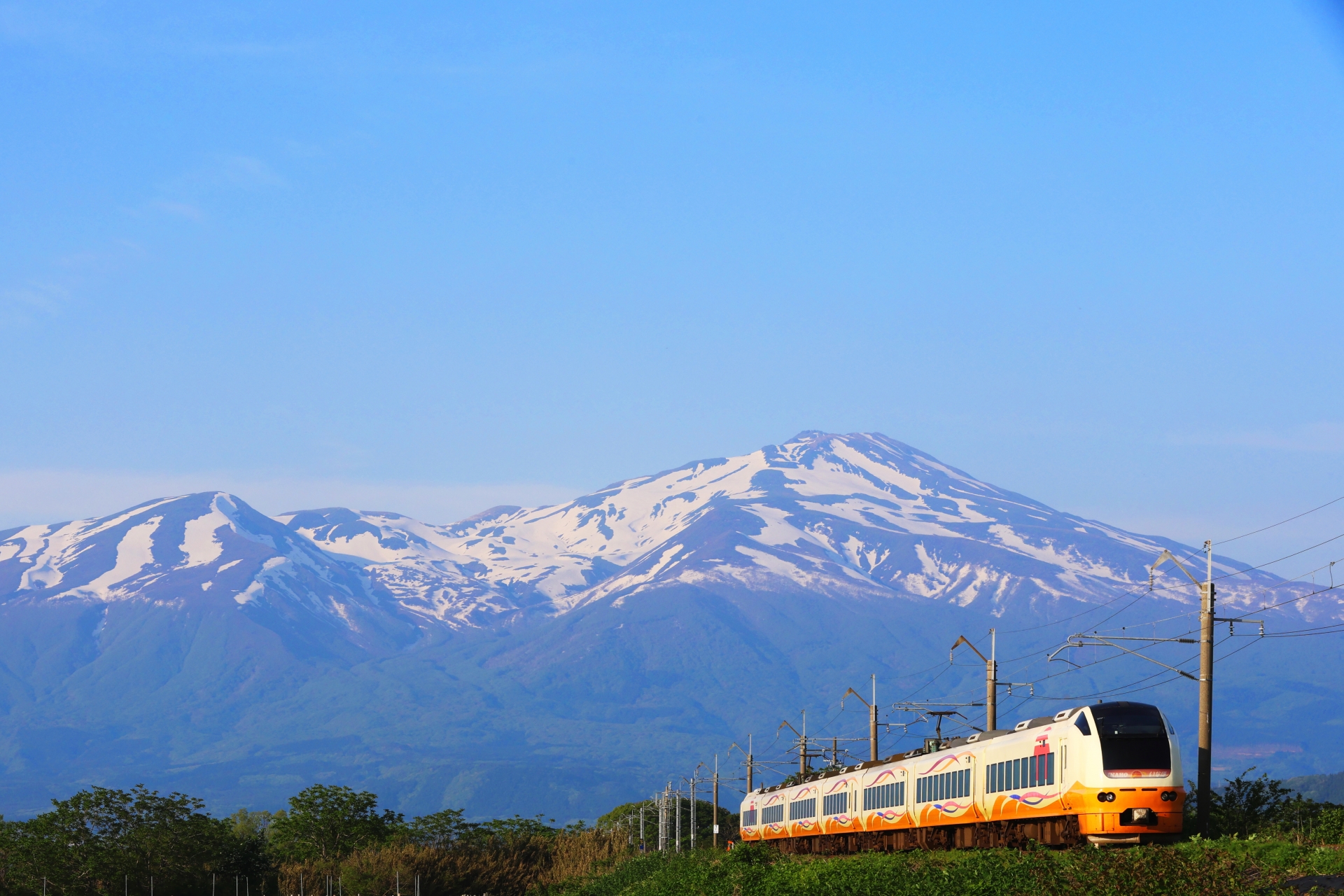
The limited express train "Inaho" began operating between
Ueno Station and Akita Station due to the timetable revision of the JNR (previous to JR) in October 1969 The routes were the Tohoku Main Line, Takasaki Line, Joetsu Line, Shinetsu Main Line, and Uetsu Main Line.
The Inaho was the first express train to connect the area along the Uetsu Main Line (between Niitsu Station and Akita Station) and the metropolitan area.
I don't have a timetable for October 1969, but according to the timetable for August 1970, the stops at the train stations were Takasaki, Mizukami (above Gunma Prefecture), Nagaoka, Niitsu, Shibata, Murakami (above Niigata Prefecture), Onumi (now Atsumi Onsen), Tsuruoka, Sakata (above Yamagata Prefecture), and Ugo Honjo (Akita Prefecture).
The nickname "Inaho" comes from the route through the Shonai Plain in Yamagata Prefecture, one of Japan's leading rice grain regions
The down train departs from Ueno Station at 1:50pm and arrives at Akita Station at 10pm, so it takes 8 hours and 10 minutes.
The up train departs from Akita Station at 9:25 and arrives at Ueno Station at 5:40, so it took 8 hours and 15 minutes.
From what I feel today, it can be said to be a rather long journey, but the Chokai Express, which runs along the same section, took 9.5 hours, which significantly reduced the travel time.
The vehicle used in the "Inah" was a Kiha 81 series diesel vehicle.
This was the first diesel vehicle for the JNR that runs using diesel fuel, and was developed for express trains, and it debuted in 1960 for the Hatsukari Express.
The Hatsukari is the first express train in the Tohoku region that connects Ueno Station and Aomori Station.
For more information, please see the article below.
It has been turned into a train and has begun operation to Aomori Station.
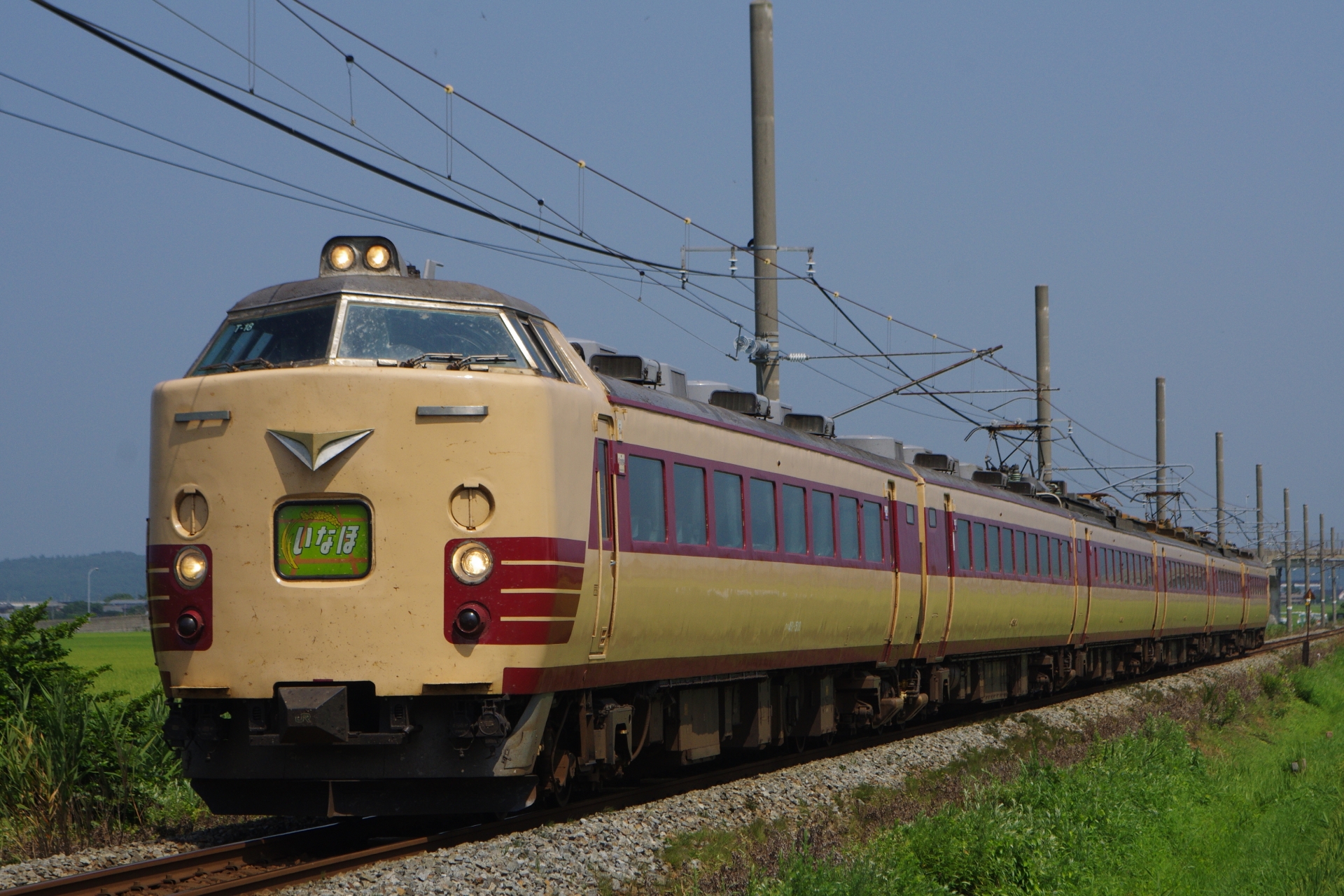
In 1972, the Uetsu Main Line was electrified, and trains were now open to operation.
will replace
the Inaho 485 series trains The 485 series train was a representative train among express trains during the JNR era.
At the same time, one round trip was increased, and two round trips per day was set to be a train connecting Ueno Station and Aomori Station
With the trains being converted to trains, the travel time between Ueno Station and Akita Station has been reduced to about 7.5 hours.
The express train "Tsubasa" that connects Ueno Station and Akita Station via the Tohoku Main Line and the Ou Main Line is still operating by diesel car, and it took about 7 hours and 40 minutes.
I don't think it's much different, but at the time, the ad for "Inaho" featured the catchphrase "It's faster than going with Tsubasa."
The travel time between Ueno Station and Aomori Station on the Inaho was about 10 hours.
For information on the express train "Tsubasa", please see the article below.
With the opening of the Joetsu Shinkansen, we are no longer able to access Ueno Station.
On November 15th, 1982, the Joetsu Shinkansen opened from Omiya Station in Saitama Prefecture to Niigata Station in Niigata Prefecture.
With the opening of the Joetsu Shinkansen, Inaho has been redirected to
four round trips a day between Niigata Station and Akita Station, and one round trip per day between Niigata Station and Aomori Station This system has ended all access to all lines and stations in the Kanto region, including Ueno Station.
At the time, the Shinkansen between Tokyo Station and Omiya Station was not open, so passengers who wanted to use the Joetsu Shinkansen from Tokyo had to first leave to Omiya Station and transfer to the Shinkansen.
Perhaps because the transfers were difficult, only one round trip left at Inaho, which was operated between Ueno Station and Aomori Station.
However, the train that boards Ueno Station was renamed "Toriumi.
When the Shinkansen opened to Ueno Station in March 1985, Toriumi became a special train between Ueno Station and Akita Station.
One round trip train that runs between Niigata Station and Sakata Station has been released at Inaho has been released.
In November 1986, the last national schedule was revised.
With this revision, the Inaho will have a total of seven round trips, with four round trips per day for trains departing from and arriving at Sakata Station (one round trip is a seasonal train), two round trips departing from and arriving at Akita Station, and one round trip from and arriving at Aomori Station.
The reason for the reduction in the number of trains departing and arriving at Akita Station has been the reason why trains departing and arriving at Sakata Station has been chosen as a route connecting the metropolitan area and Akita Station via Morioka Station rather than via Niigata Station.
With the opening of the Tohoku Shinkansen in 1982, travel time required to travel via Morioka was shorter.
In 1987, the JNR was divided into privatized and the Inaho became a train operated by JR East.
The following year, March 1988, there were eight round trips in total, with five round trips departing and arriving at Sakata Station per day, two round trips departing and arriving at Akita Station, and one round trip departing and arriving at Aomori Station.
On the other hand, Toriumi, which served Ueno Station, was abolished as a special train and disappeared.
"Inaho" after JR was launched

"Inah" after the launch of JR also experienced various changes.
In 1991, the maximum speed in some sections was increased from 100km/h to 120km/h, and the " Super Inaho " was introduced, with a limited number of stops, reducing the travel time.
The nickname "Super Inaho" disappeared in 1999.
In 1993, two round trips to Inaho, a complete Niigata prefecture, ranging
from Niigata Station to Murakami Station However, just two years later, in 1995, one round trip was abolished, one round trip was extended to Sakata Station, and trains departing and arriving at Murakami Station were extinguished.
In 1997, the Akita Shinkansen opened and Komachi began operating between Tokyo Station and Akita Station.
"Inah" has finally lost its role as a means of transportation connecting the metropolitan area and Akita Prefecture, and trains departing and arriving at Sakata Station become the main focus.
In March 2001, due to the abolition of the express train "Shiratori" that operated between Osaka Station and Aomori Station, the Inaho, which connects Niigata Station and Aomori Station, became the longest-distance train for a regular lunchtime express train on Japan's traditional lines
For information on the express train "Shirotori", please see the article below.
However, nine years later, in December 2010, its position as the longest-distance train would be lost.
As the Tohoku Shinkansen opens its entire line to Shin-Aomori Station, timetable revisions have been made, and limited express trains running through the north Tohoku region have been organized.
At that time, ended
its operation between Akita Station and Aomori Station (the express train "Tsugaru" will be set up instead between Akita Station and Aomori Station).
From then on, "Inaho" only operated by trains connecting Niigata Station with Sakata Station and Akita Station , and a system that continues to this day has been established.
E653 series train launch
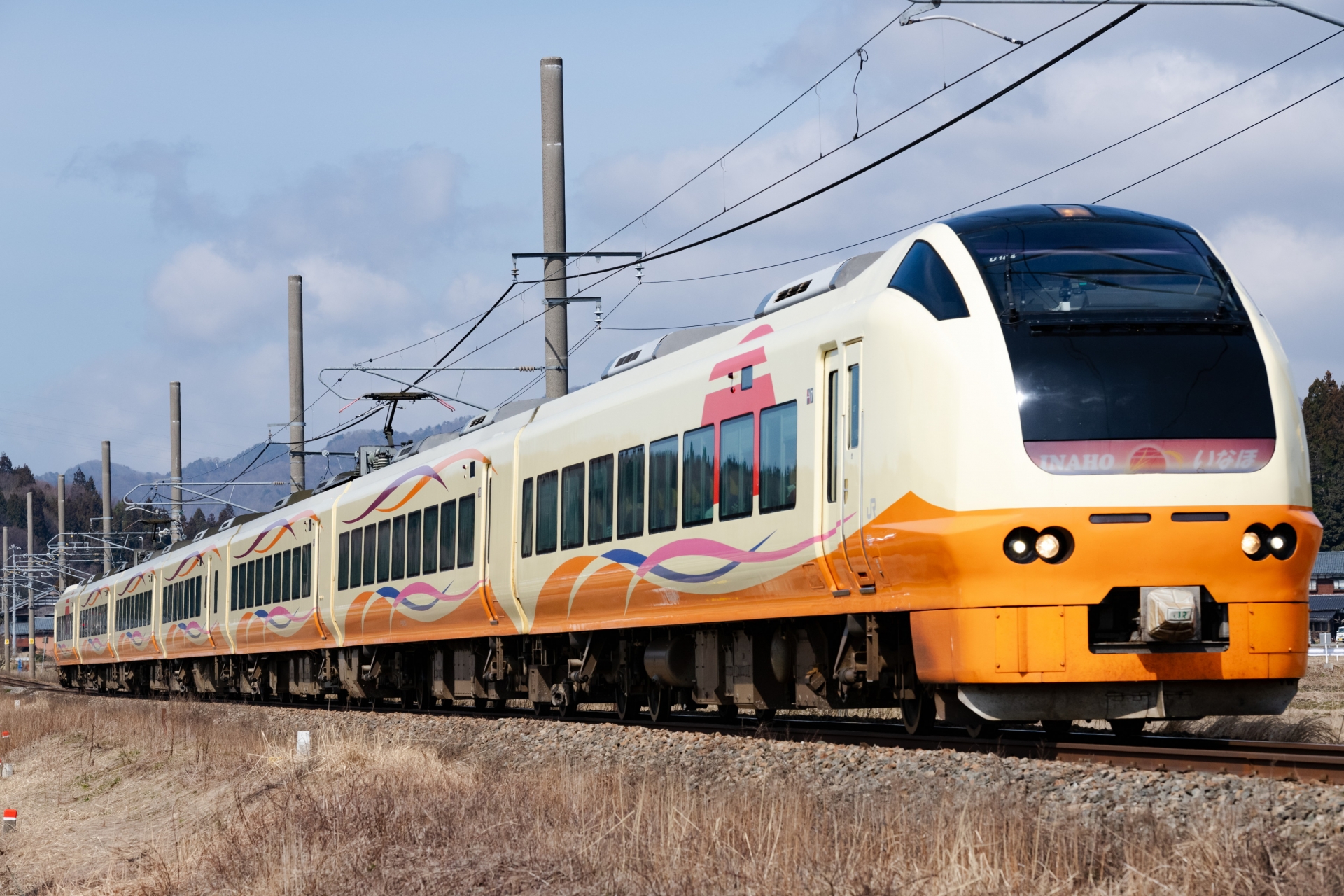
"Inaho" has been operated for many years by the 485 series train that appeared during the JNR era, but it cannot be used forever.
E653 series trains began in September 2013
The E653 series was a vehicle that began commercial operation in 1997, and was originally used on the Joban Line express train "Fresh Hitachi."
This was converted to "Inahho" due to the withdrawal from the Joban Line express train.
For information on express trains on the Joban Line, such as "Fresh Hitachi," please see the article below.
In July 2014, about a year after the launch of the E653 series, all regular trains were unified to operate on the E653 series.
The 485 series train, which has been running as "Inaho" since 1972, has concluded its long history of success.
In 2018, the platform that Niigata Station serves "Inah" was elevated, allowing users to transfer on the same platform as the Joetsu Shinkansen, making it more convenient.
The operating section of "Inaho" is shorter than when it connected Ueno Station to Akita Station and Aomori Station.
The main purpose of passengers' use has changed dramatically between the past and present.
In addition, the train has been replaced twice, so it can be said that it is a train that does not have much of a trace of its appearance when it first appeared.
That said, "Inaho" continues to run in the Shonai region of Yamagata Prefecture, where its name comes from.
Considering that all of the "Hatsukari", "Swan", "Tsubasa (as a conventional express train)" and "Tourami" mentioned in this article have all been abolished, it can be said that "Inaho" remains in active service.


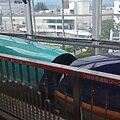




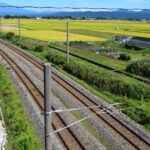

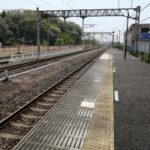

!["Mogami safflower" certified as a Japanese heritage and Japanese agricultural heritage [Yamagata Prefecture] Mogami safflower](https://jp.neft.asia/wp-content/uploads/2022/12/30121446_m-1-150x150.jpg)
![Hot springs gush out in a place where there are no volcanoes! "Yuzawa Geopark" where you can see the mystery of the earth up close [Akita Prefecture] 4550228_m](https://jp.neft.asia/wp-content/uploads/2023/02/4550228_m-150x150.jpg)


